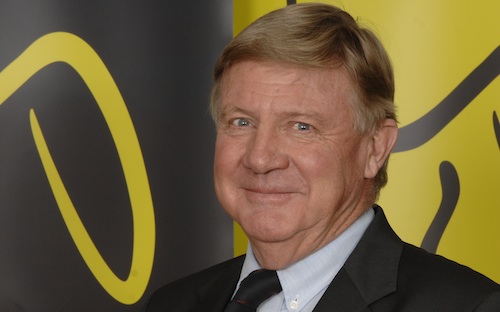
Cell C can continue using its controversial new trademark, which includes a design that resembles the copyright symbol. There’s even a “reasonable possibility” it will be successful in registering “Cell ©” as a trademark, despite the fact that various applications it made in December 2009 were “provisionally declined” this month by the Registrar of Trademarks.
These are the views of Don MacRobert, one of the country’s leading intellectual property and trademarks lawyers, who says the cellular operator can continue using the branding despite the registrar’s decision, which was handed down on 2 August, just two days before Cell C unveiled its new logo.
The company’s rebranding forms part of a bigger strategy to reinvent itself in the market. It’s building a third-generation mobile network and restructuring its operations in an effort to sign up more profitable customers and to grow market share.
According to MacRobert, the trademarks Cell C has applied for are shown in various forms, but are dominated by the world “Cell” and the copyright symbol. In some instances, the “©” is shown in a larger size compared to the word “Cell”; in others, there’s a duplication of the symbol.
The registrar has not set out its reasons for the provisional rejection of Cell C’s application, but MacRobert says the company’s continued use of the new branding “would seem to be in order”.
“The company will also be able to argue the matter before the registrar to try to gain acceptance for the new forms of the mark,” he says. “The refusal by the registrar probably came as something of a surprise to the applicant.”
He says the rejection of the new trademark application is probably not because there were earlier conflicting trademark registrations, as these were already registered in word form. Rather, it’s more likely to be related to the incorporation of the “©” symbol.
In order to be registered under the Trade Marks Act, a trademark needs to satisfy various “registrability tests”, MacRobert says. It must be capable of distinguishing between the goods or services for which the application has been made from the goods or services of another entity. This is unlikely to be the problem.
The application more likely falls foul of section 10 of the act, which states that certain trademarks cannot be registered, including marks which consist exclusively of a sign or indication which may serve in the trade to designate certain characteristics of goods or services, or which consists exclusively of a sign or an indication which has become customary in the bona fide and established practices of the trade.
It appears “more than likely” that Cell C’s application was provisionally rejected, in terms trademark regulations, because it contains “certain words and symbols that can’t be registered”.
“Subject to the provisions of any other law, the registrar may refuse to accept any application upon which certain symbols or words appear, including the words ‘patent’ or ‘registered trademark’ (when this is not the case) or, more particularly, certain symbols such as ‘®’ and ‘©’ or similar combinations which may be construed to import a reference to registration.”
MacRobert says the act clearly prohibits the registration of trademarks that incorporate the “©” symbol.
But the registrar’s rejection should not prove insurmountable for Cell C, he says. “In the first instance, it appears the company has already started using this new ‘Cell ©’ trademark. So, use has actually commenced.”
MacRobert says the matter needs to be dealt with more fully by the Trade Marks Office.
“Cell C’s attorneys can attend hearings with the registrar and argue against the provisional rejection. They may contend, as Cell C’s CEO [Lars Reichelt] has already stated in public, that there is no significance in the composite ‘Cell ©’ trademark when taken as a whole resembling the copyright symbol on its own,” he says.
“They may state that the Cell C mark has become widely known through extensive use and that this slight variation by the incorporation of the ‘©’ symbol can in no way be construed as a reference to registration of any sorts, but rather an expanded use of their trademark.” — Duncan McLeod, TechCentral
- Subscribe to our free daily newsletter
- Follow us on Twitter or on Facebook




